PMS Bazaar recently organized a webinar titled “How to overcome FOMO (Fear of Missing out) in Investing and Why Timing Matters?” which featured Mr. Mahesh Gowande, Director and CIO, PriceBridge (Ayan Analytics Pvt. Ltd).
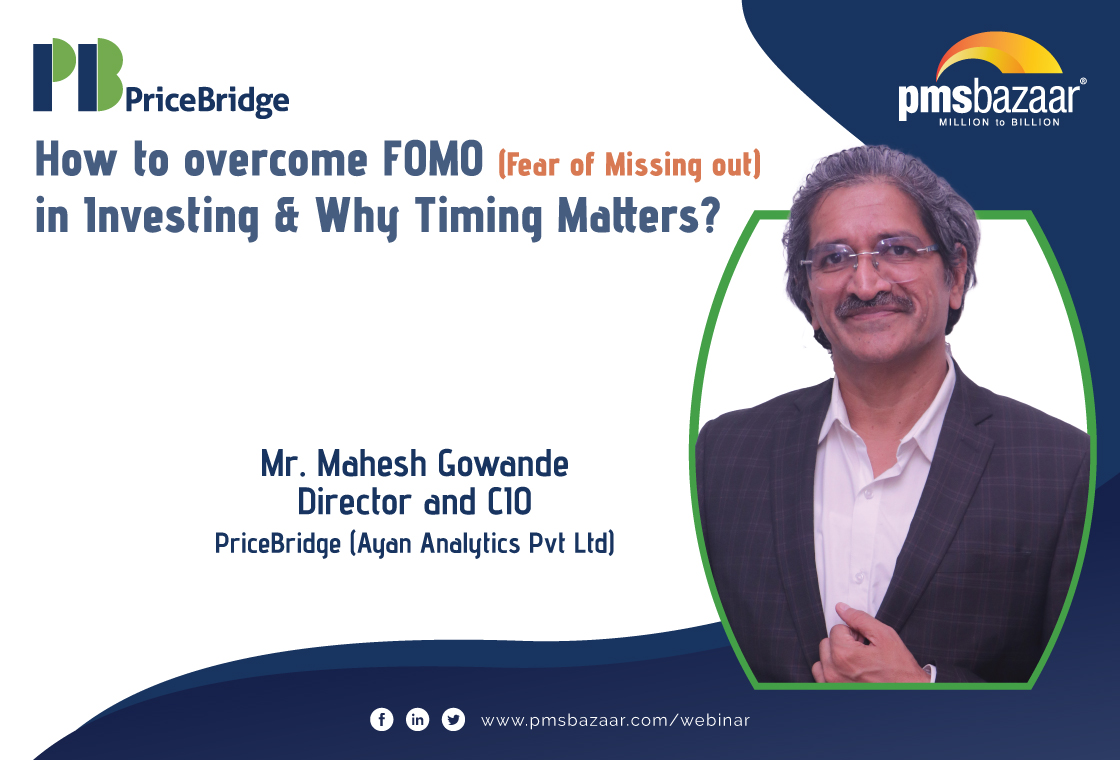
The webinar blog covers insights from Mr. Gowande, which includes how to overcome FOMO in investing. He discusses India’s equity market growth, minimal floating equity, volatility as opportunity, risk management, timing actions over timing the market, diversified and customised portfolios, sector rotation, time mapping, and disciplined, data-driven strategies for consistent long-term returns.
Key aspects covered in this webinar blog are
- Understanding market structure and growth
- The minimal floating equity and volatility
- Risk management over index level
- Opportunities and investment strategy
- Strategic investment: timing actions, not the market
- Differentiating the PMS approach
- Time mapping and sector rotation
- High standards for profit hurdle
Mr. Mahesh Gowande started by addressing the pervasive Fear of Missing Out (FOMO) among investors, emphasizing that a robust understanding of the market structure and risk management can mitigate this anxiety. He positioned that the Indian equity market presents ample, continuous opportunities, making the worry of being 'too late' unfounded.
Understanding Market Structure and Growth
Mr. Gowande highlighted the critical importance of understanding the market structure in the context of FOMO. He observed a significant shift in the Indian financial landscape over the last decade, noting that unlike developed markets where bond or interest rate markets are typically larger than equity markets, India's equity market has actually surpassed its debt or bond market in size.
He stated that the Indian equity market's growth, coupled with a huge inflow of capital, particularly post-COVID-19, has led to its remarkable steadiness. He pointed to the continuously rising monthly Systematic Investment Plan (SIP) amounts, which are consistently breaking records, as evidence of this strong foundational support. This steady domestic inflow, he suggested, was the reason the market remained resilient even when Foreign Institutional Investors (FIIs) withdrew substantial amounts in the preceding one and a half years.
Mr. Gowande noted that many investors felt they had missed past rallies, which often led them to make hasty, ill-advised decisions that ultimately hurt their returns. However, he reassured listeners that with India being a growing economy, projected to make a big jump from its current size to a significantly larger figure (e.g., $10-$12 trillion) in the next five to ten years, the returns for investors would be very large. The increase in the number of listed companies would also ensure a constant flow of opportunities for Indian investors, negating the concern about missing out.
The Minimal Floating Equity and Volatility
Mr. Gowande provided an insightful breakdown of a company’s equity structure. He explained that a vast majority of the equity, often up to 75%, is held by promoters, long-term pension funds, insurance companies, and financial institutions that backed the company early on. The next significant portion (around 10 to 15%) is held by HNIs, family trusts, mutual funds, AIFs, and PMSs. Ultimately, he pointed out that the actual equity floating in the market—the portion that sees high daily activity—is surprisingly small, often only around 2% to 3% of the total equity for large corporates, though it could be up to 10% for small-cap companies. He suggested that what the general investor perceives as 'the market activity' is based on this very small, floating portion.
He then addressed the investor fear surrounding volatility, calling it a friend to the fund manager. While volatility scares many, it is precisely what allows investors, especially fund managers, to enter stocks at different, opportune times. He cautioned that confusing volatility with risk could lead investors to safer, but potentially lower-returning, options like Fixed Deposits or the bond market. He further suggested that the risk in the bond market is often underestimated, as investors sometimes take on higher credit risk for a marginal increase in income, a risk that could be greater than the equity risk.
Risk Management Over Index Level
Mr. Gowande challenged the common notion that the risk in the market increases proportionally with the index level (e.g., thinking a 25,000-index level is riskier than 21,000). He countered this by stating that the index level itself is not the risk. The true safety in the Indian equity markets now comes from the robust risk management and margining systems implemented by SEBI and the exchanges. He shared his personal experience, noting that in the early 1990s, when the index was much lower, there were far more bankruptcies and financial crises because proper margin systems and risk management were absent. Crashes in 2008 and during the COVID-19 pandemic, though significant, resulted in fewer bankruptcies due to the strong cushioning provided by the present margin system.
He concluded that an investor with proper risk management in place need not worry about the index level and can invest in any market condition. The tendency to feel fear when markets correct and greed (leading to FOMO) when markets rise must be controlled.
Opportunities and Investment Strategy
For those considering investment, particularly in strategies like their firm's ETF strategy, Mr. Gowande highlighted that companies which are part of the top indices (like the top 750) have already outperformed 90% of other listed companies. Therefore, investing in an index-based strategy offers a built-in safety net of investing in superior, proven companies.
He also provided an insightful perspective on probability in investing. He argued that the natural probability of being right or wrong in an investment is 50-50 for everyone. The key to success, then, is making a small additional effort to shift this probability by just 10% to 20% in one’s favor. Coupled with a disciplined risk-reward ratio, ideally 1:3 (rewarding three units for one unit of risk), achieving annual returns of 16-18% becomes feasible. He emphasized that the real challenge lies in consistently generating the additional 3% 'alpha' over the underlying index returns, which requires sound mind and emotional control rather than just a deep pocket.
Mr. Gowande shared that their core strategy involves trend following with a lag; they do not chase trends. Instead, they wait for corrective opportunities in an up trending market. He asserted that the principal behavior of markets, dictated by the collective and habitual response of all major participants, ensures that even bullish stocks will offer deep, repetitive corrective opportunities to invest, thereby providing multiple entry points to investors who exercise patience and discipline.
Strategic Investment: Timing Actions, Not the Market
Mr. Mahesh Gowande emphasized the unique importance of timing one's actions as an investor, rather than attempting the impossible task of timing the market itself. He asserted that this focused approach is key to generating additional alpha. He explained that their firm's entire philosophy is data-driven, treating data as their "silent organiser" that brings clarity from chaos, and rejecting random decisions based on gut feeling or management views.
He underlined that the firm’s primary objective is to deliver consistent returns, aiming for targets like 16.5% to 20%. He stressed that while high single-year returns (like 30% or 35%) might be achievable by increasing risk, consistency over the long run is what truly matters. Achieving this consistency, he stated, requires a rigorous, process-driven approach supported by sound research and robust execution, not just information or meetings with company management.
Differentiating the PMS Approach
Mr. Gowande highlighted several ways their Portfolio Management Service (PMS) differs from the conventional model:
- Risk Management and Diversification: He noted that many PMSs focus on identifying multibagger stocks and run highly concentrated portfolios. His firm, however, prioritizes risk management and maintains a diversified structure, holding between 30 and 50 stocks, which is similar to a mutual fund framework, to avoid increased systemic risk.
- Customized Portfolios: Unlike firms that use a single "model portfolio," their firm creates customized portfolios based on the specific market conditions at the time a client invests. This is crucial because investors often enter the market during high bullish momentum, and the firm’s job is to deploy the capital slowly and steadily while maintaining the same risk level for all clients.
- Performance in Various Cycles: He stated that while concentrated portfolios thrive in secular bull runs, their process-driven system is designed to perform better when the markets are in a sideways or dull phase by taking advantage of volatility. Their goal is to fall less during market declines and outperform during market upswings, resulting in a lower beta than the benchmark yet delivering superior returns.
Time Mapping and Sector Rotation
The firm’s core expertise lies in time mapping, an approach that recognizes that every quality stock or sector has an optimum time or time cycle during which it is poised to deliver strong returns. Mr. Gowande gave examples of excellent companies, such as HDFC, Infosys, and TCS, that had not delivered expected returns because they were not in their favorable time-cycle zone.
Their proprietary state-of-the-art software, called Zodiac Analyst, provides visualization and insights to the fund manager, reducing anxiety by indicating where money should flow next. This is done by allocating funds (up to 20-25%) into sectors based on this cyclical analysis. The firm also focuses on market cap rotation, adjusting exposure between large, mid, and small-cap stocks based on their projected performance cycles.
He reiterated the key message: their strategy is not about chasing trends but about focusing on fundamentally sound stocks already proven by being in the indices and then using time mapping to time actions (sector/market cap allocation) for superior, risk-adjusted returns.
High Standards for Profit Hurdle
Finally, he detailed their client-first fee structure, noting their profit hurdle is exceptionally high—14% for their general strategy and 17% for their mid and small-cap category. He explained that they believe they should not charge a profit fee unless they surpass the returns delivered by the base indices.
Mr. Gowande covered all the topics mentioned above in-depth and answered questions from the audience toward the end of the session. For more such insights on this webinar, watch the recording of this insightful session through the appended link below.
Get access to rich data and analytics of PMS & AIF by subscribing to us. Join the 75000+ investors & experts: Subscribe NOW
Recent Blogs
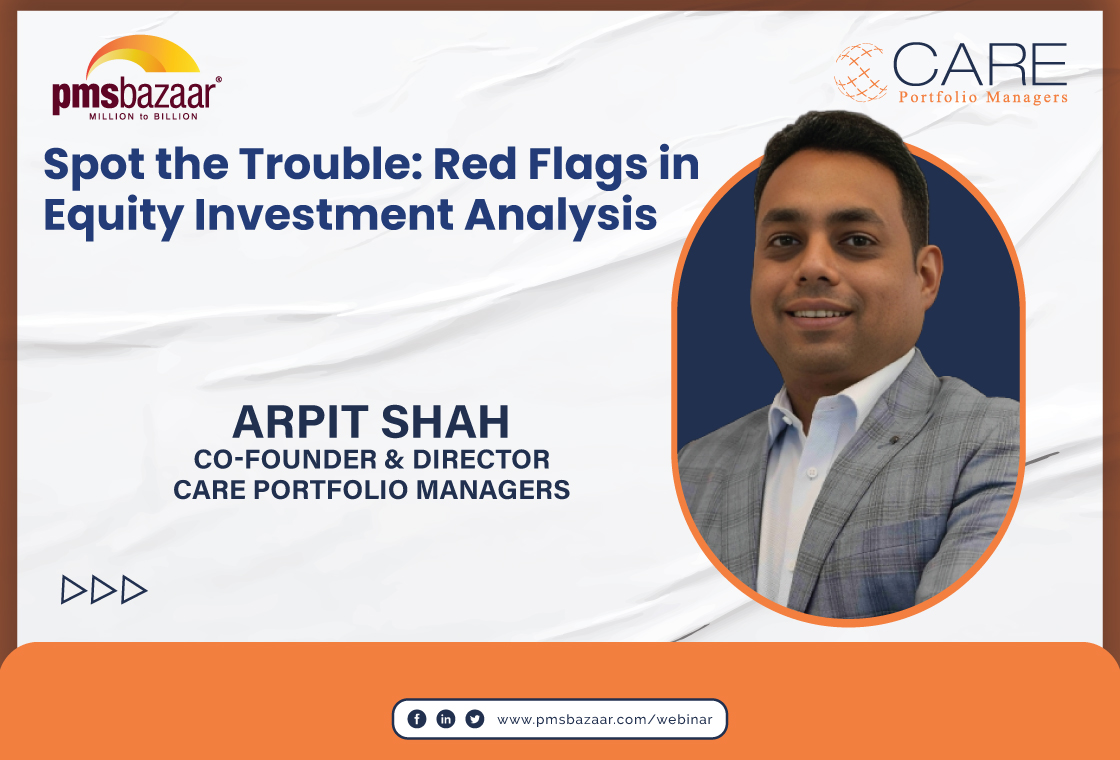
Spot the Trouble: Red Flags in Equity Investment Analysis
PMS Bazaar recently organized a webinar titled “Spot the Trouble: Red Flags in Equity Investment Analysis,” which featured Mr. Arpit Shah, Co-Founder & Director, Care Portfolio Managers. This blog covers the important points shared in this insightful webinar.

Long-Only AIFs Rebound Sharply in October; Long-Short Strategies Lag Despite Lower Volatility
106 long-only AIFs averaged 3.68% vs 32 long-short AIFs at 2.7%; only 24–31% of funds beat key indices

Markets log strongest monthly gains in 7 months; PMS performance turns near-uniform in October
Nifty 50 TRI gained 4.62%, BSE 500 TRI rose 4.27%; 415 of 427 equity PMSes ended positive
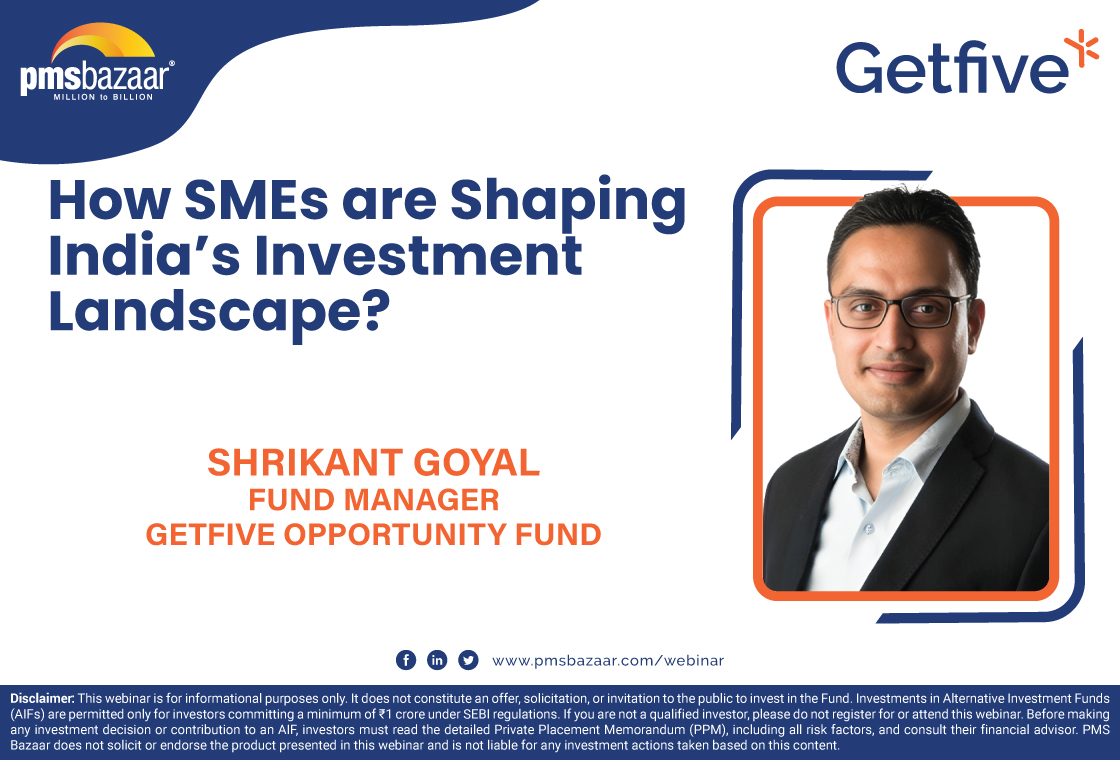
How SMEs are Shaping India’s Investment Landscape?
PMS Bazaar recently organized a webinar titled “How SMEs are Shaping India’s Investment Landscape?” which featured Mr. Shrikant Goyal, Fund Manager, GetFive Opportunity Fund.
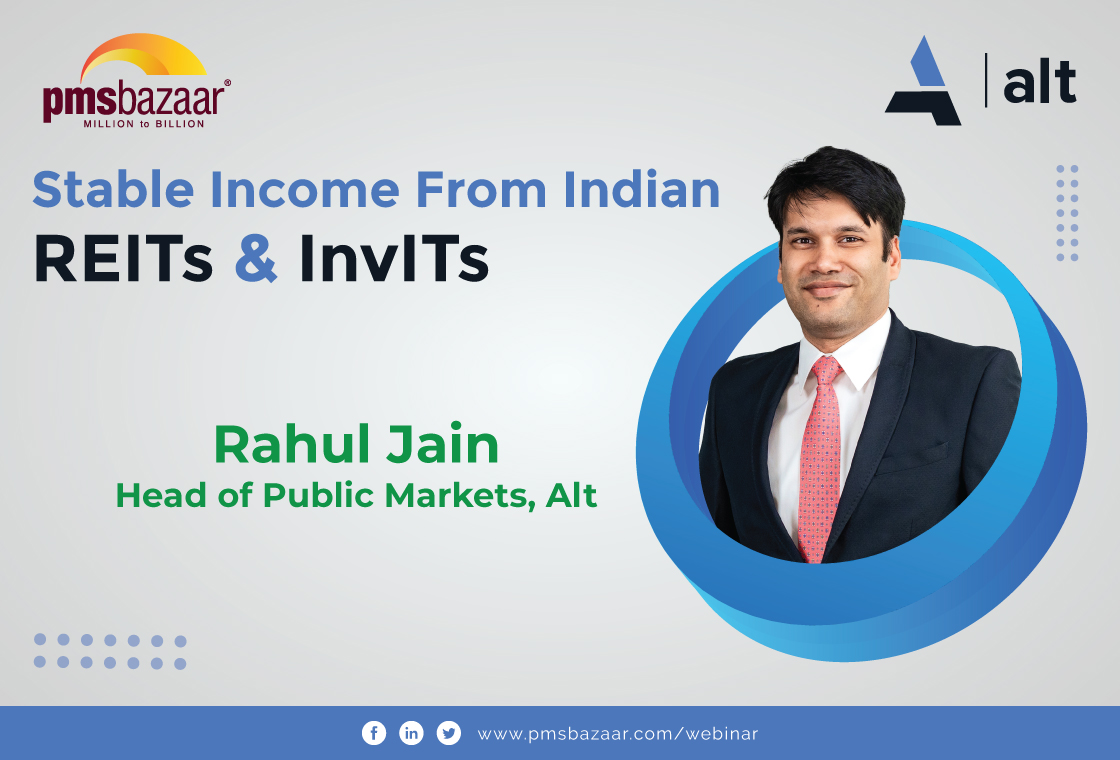
Stable Income from Indian REITs and InvITs
PMS Bazaar recently organized a webinar titled “Stable Income from Indian REITs and InvITs,” which featured Mr. Rahul Jain, Head of Public Markets, Alt.
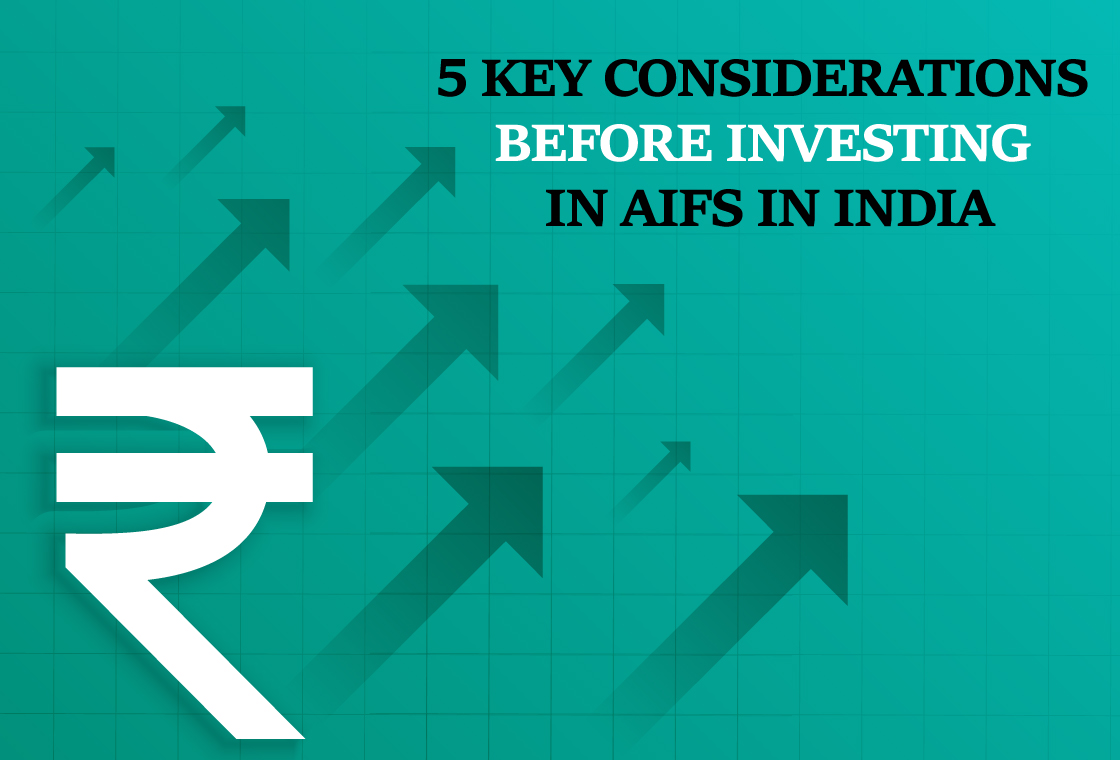
5 Key Considerations Before Investing in AIFs in India
Alternative Investment Funds (AIFs) have emerged as a compelling option for sophisticated investors seeking diversification and potentially superior returns. But venturing into AIFs requires a clear understanding of their unique characteristics that go beyond simply knowing what they are and their categories.

How AIF can help in diversification?
Traditionally, Indian investors have relied on a mix of stocks and bonds to build their wealth. While this approach offers diversification, it can still leave your portfolio vulnerable to market fluctuations. Enter Alternative Investment Funds (AIFs), a dynamic asset class gaining traction for its ability to unlock diversification beyond the realm of conventional options.

Long-Short AIFs Outperform Again Even as Markets Rebound in September
104 long-only funds shows an average monthly gain of just 0.37 per cent, while long-short AIF category averaged 0.94 per cent

